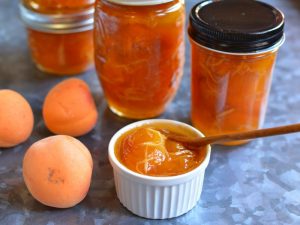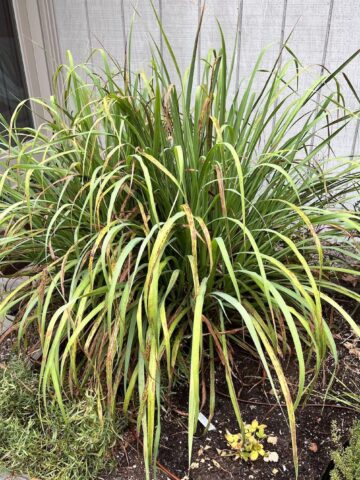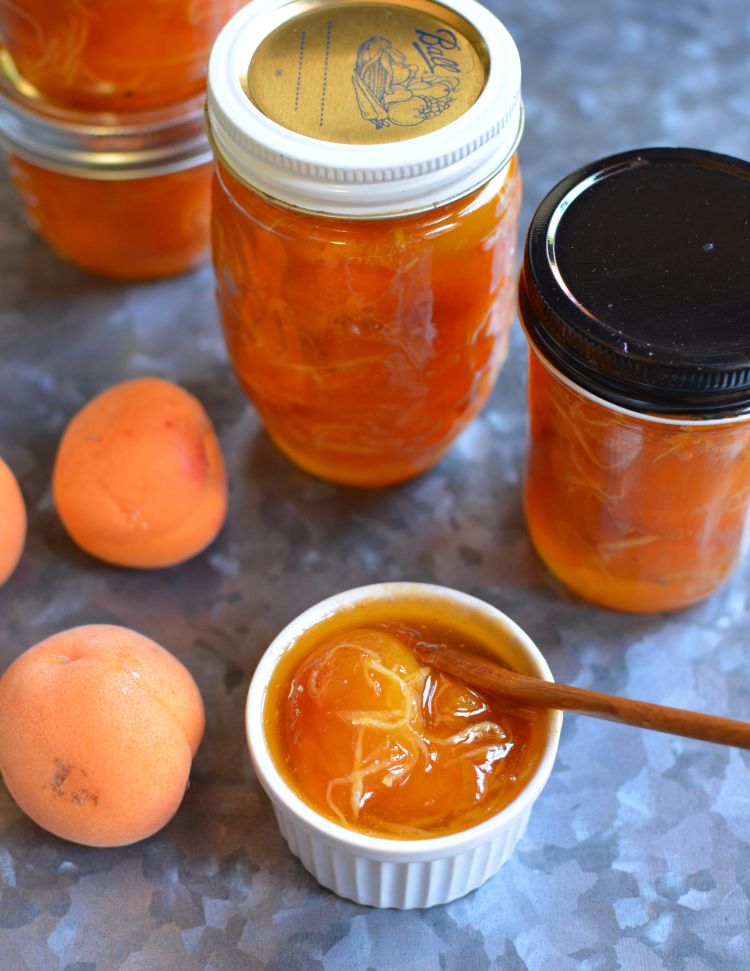
Apricots originated in China and then spread westward, writes Joyce Goldstein in Jam Session, her new book on fruit preserving. I knew that ginger started out in southern Asia so Joyce’s apricot ginger jam recipe seemed like a natural Asian combination of ingredients. I’ve been fixated on apricots because its seasoning is winding down around Santa Cruz, and fate had given me quite a lot, more than I can eat. I made plum sauce with apricots and was looking for more ideas.
Joyce writes with authority, having authored innumerable cookbooks and owning a restaurant in San Francisco. Jam Session has practical information as well as history and friendly flavor pairings like this apricot ginger jam recipe. The book is organized by season and then by fruit within the season since the rule with preserving is you’re preserving something at its peak flavor and texture.
I took her apricot jam recipe for a spin and the result was stunningly good, vibrant and beautiful. I used locally grown Royal Blenheim apricots, which have terrific flavor, but the gingery-sweet boost turned the apricot jam into a stellar expression of the fruit itself. It was synergistic. That’s what good jams recipes are about.
Fancy jams can sell for about $10 a jar but you can make quite a few jars with $10 of good fruit. Plus, you’ll get the satisfaction of making the jam yourself. Make this jam while apricots are still around! If they're gone from your locale, keep this recipe for next year!
A few notes about what you’ll be doing in this recipe and tips from Joyce:
This is a two-day process because you want to macerate the ingredients. I cut thin matchstick ginger because the strands look so beautiful. For the lemon juice, use a regular lemon (like a Eureka) with decent about of acidity – not fancy Meyer lemons which have lower acidity. In a pinch, use cider vinegar instead of lemon juice.
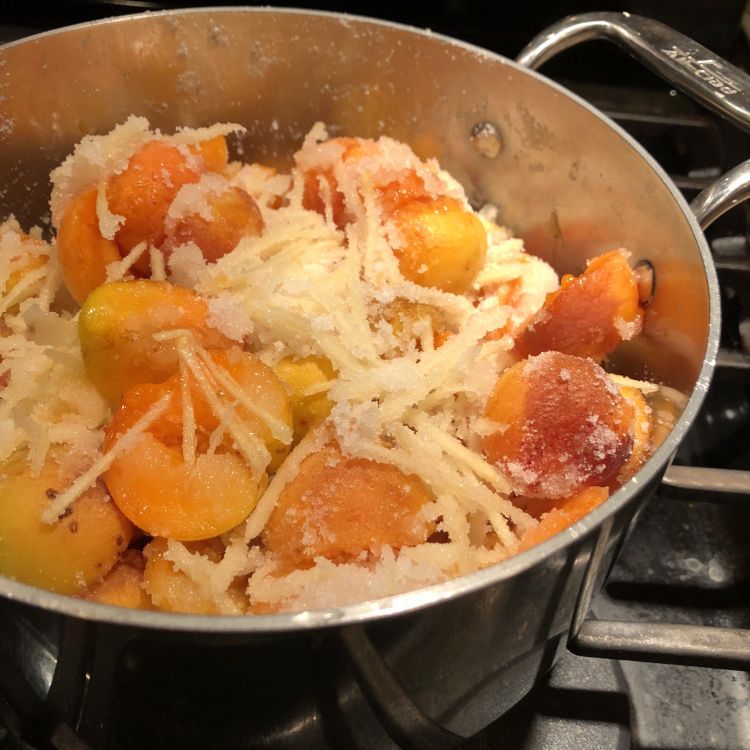
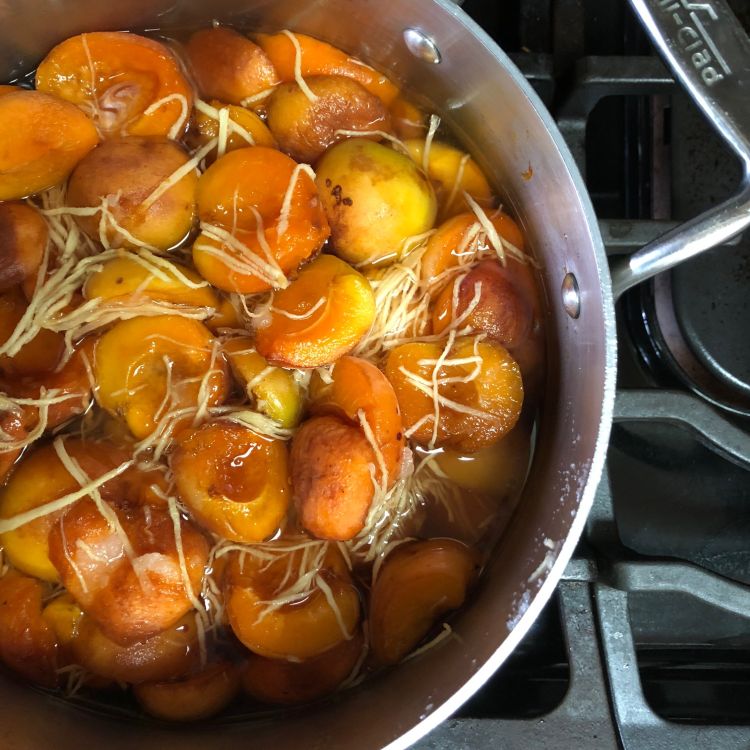
If it’s hot, cover and put the pot in the fridge. Otherwise, cover and set it on the counter overnight. Macerating allows the fruit to release liquid which is then cooked down and you get deeper flavor.
Aside from straightforward jam instructions, there are smarty little tips like this one: Sterilize your lids in pairs with the opposite sides facing one another so they don’t stick!
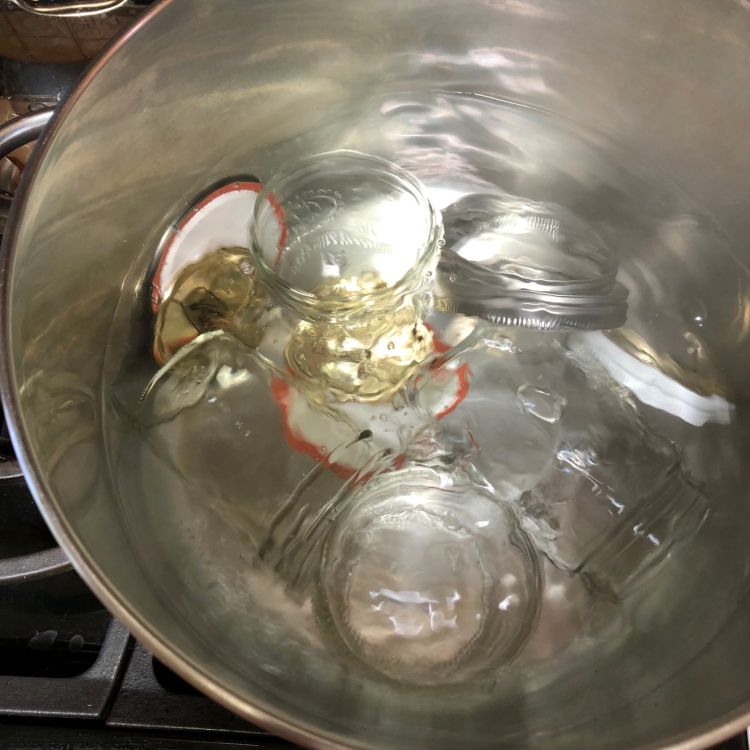
I made a half batch of the jam and cooked it in a medium (3-quart) pot. Straining the fruit in a mesh strainer was great for draining the syrup. The strained fruit holds its flavor because it sits aside while the syrup cooks down, thereby the fruit’s flesh doesn’t fall apart due to the violent nature of bubbling liquid.
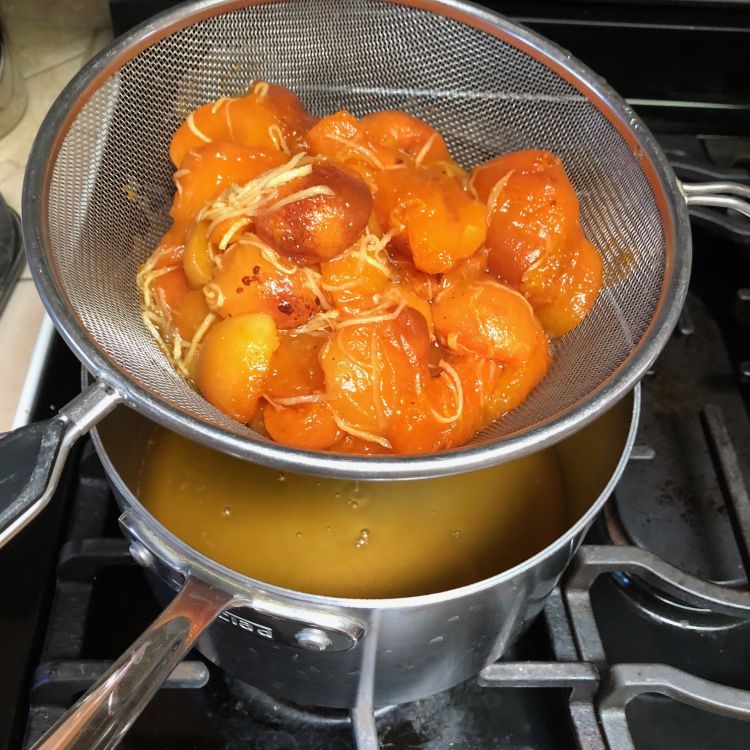
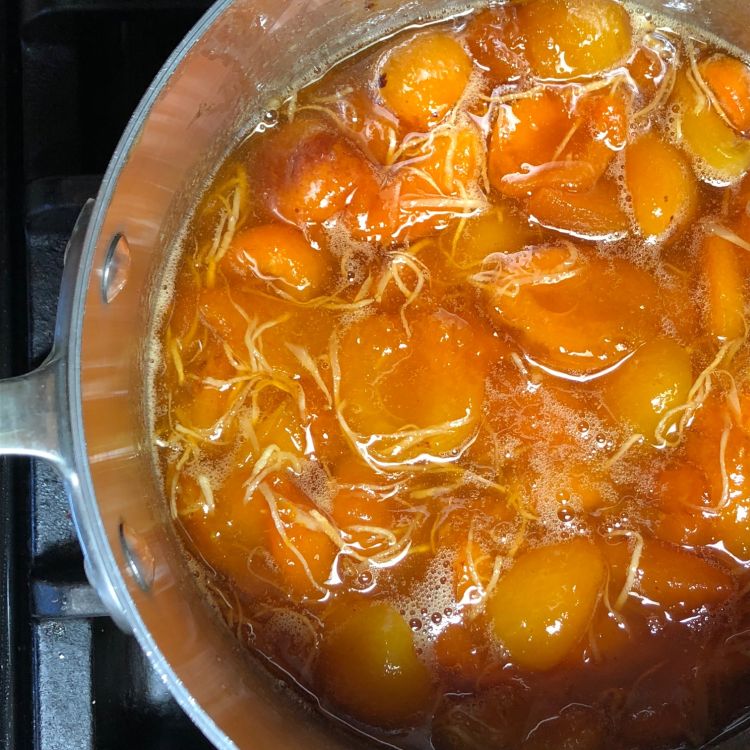
When it came to the plate test, you want to be patient. The first try will likely be premature. Yes, at a certain point, the syrup is thick enough so it runs but stops on the cold plate when you hold the plate vertically – a move that you just gotta do with no fear. Wipe the floor, if you have to.
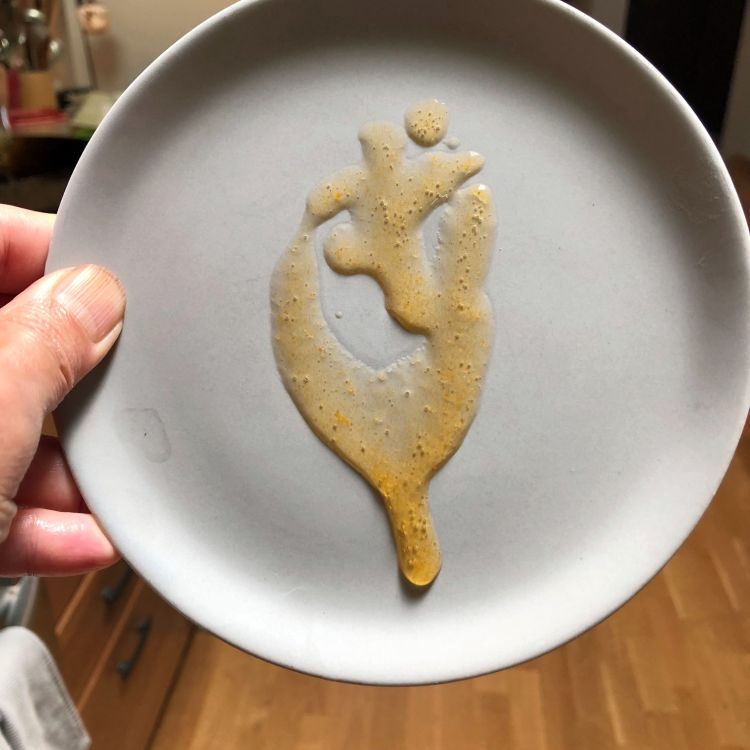
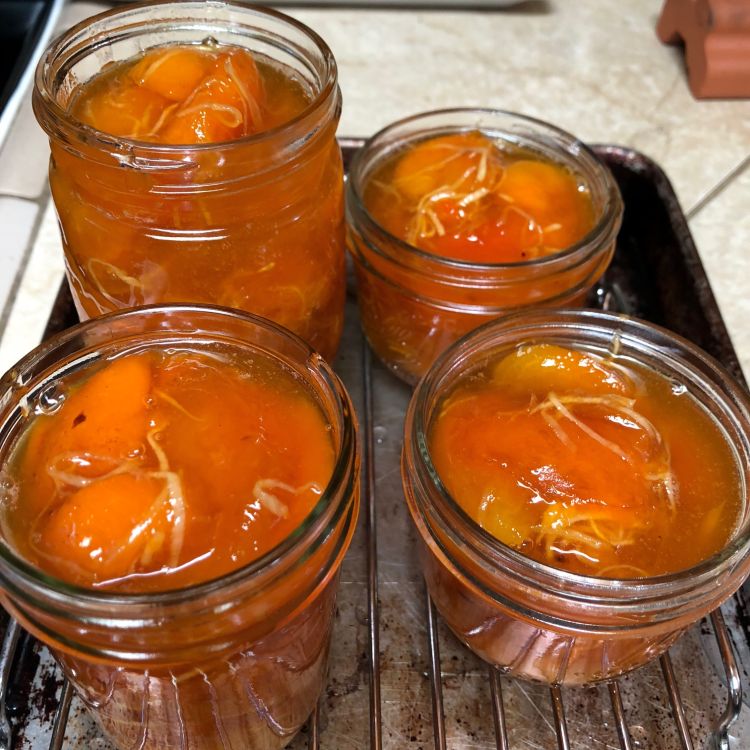
I hope you find this apricot ginger jam to be as startlingly good as I did. There are many other amazing ideas in Jam Session, which is written with thought and care. There’s a great balance of practical, historical, and culinary insight – a combination that can only come from a veteran author and teacher like Joyce Goldstein.
Apricot Ginger Jam
Yield 10 half-pint jars
Weigh the ginger if you want to make sure you have enough of its signature bite. If you make a half batch, use a medium (3-quart) pot to macerate and cook the jam.
If you don’t want to cut the ginger by hand, puree it in a small process so it permeate the jam, Joyce says. She also suggests enjoying the jam on top of ice cream. You can mix in a little soy sauce and us it to glaze pork or ham.
Ingredients
- 10 half-pint jars
- 5 pounds apricots, pitted and halved (8 cups)
- 4 cups granulated sugar
- 3 tablespoons fresh lemon juice
- 5 to 6 ounces fresh ginger, peeled and pureed (¼ cup) or finely julienned (½ cup)
Instructions
- Place 3 or 4 small plates in the freezer.
- Cut any large apricot halves into quarters.
- In a large preserving pot, gently combine the apricots with the sugar and toss to mix. Add the lemon juice and ginger and gently stir to mix in. Let sit overnight to macerate.
- The next day, bring the apricot mixture to a boil over medium-high heat. Cook for 2 minutes. Remove from the heat and let sit, uncovered, for 1 hour.
- If you want the fruit to retain some of its shape in the finished jam, set a colander over a bowl and, using a slotted spoon, transfer the apricots to the colander.
- Place two baking sheets on the counter near your stove. Heat a kettle of water. Set two stockpots on the stove and fill them with enough water to cover the jars by 1 to 2 inches. Bring the water to a boil over medium-high heat. Sterilize the jars in the water bath for 10 minutes.
- Reduce the apricot syrup, stirring frequently, until thickened. Carefully return the apricots to the jam pot, along with any juices that have collected in the bowl under the colander. Cook the jam briefly until a spoonful of the syrup dropped on one of the frozen plates runs some but also sets softy when the plate is vertically turned (see the photo in the post). Remove the pot from the heat.
- Bring the water bath back to a boil. If the jars have cooled, warm them in the water bath or in a 200°F oven. Simmer the lids in a saucepan of hot water. Place the jars on the baking sheets.
- Ladle the jam into the jars, leaving ¼-inch headspace. Wipe the rims clean and set the lids on the mouths of the jars. Twist on the rings.
- Using a jar lifter, gently lower the jars into the pots. When the water returns to a boil, decrease the heat to an active simmer, and process the jars for 10 minutes. Turn off the heat and leave the jars in the water for 1 to 2 minutes.
- Using the jar lifter, transfer the jars from the pots to the baking sheets and let sit for at least 6 hours, until cool enough to handle. Check to be sure the jars have sealed. Label and store the sealed jam for 6 months to 2 years. Once open, store in the refrigerator for up to 3 months.
Notes
Slightly adapted from Joyce Goldstein’s Jam Session (Lorena Jones Books, 2018)
Courses Anytime
Cuisine American













